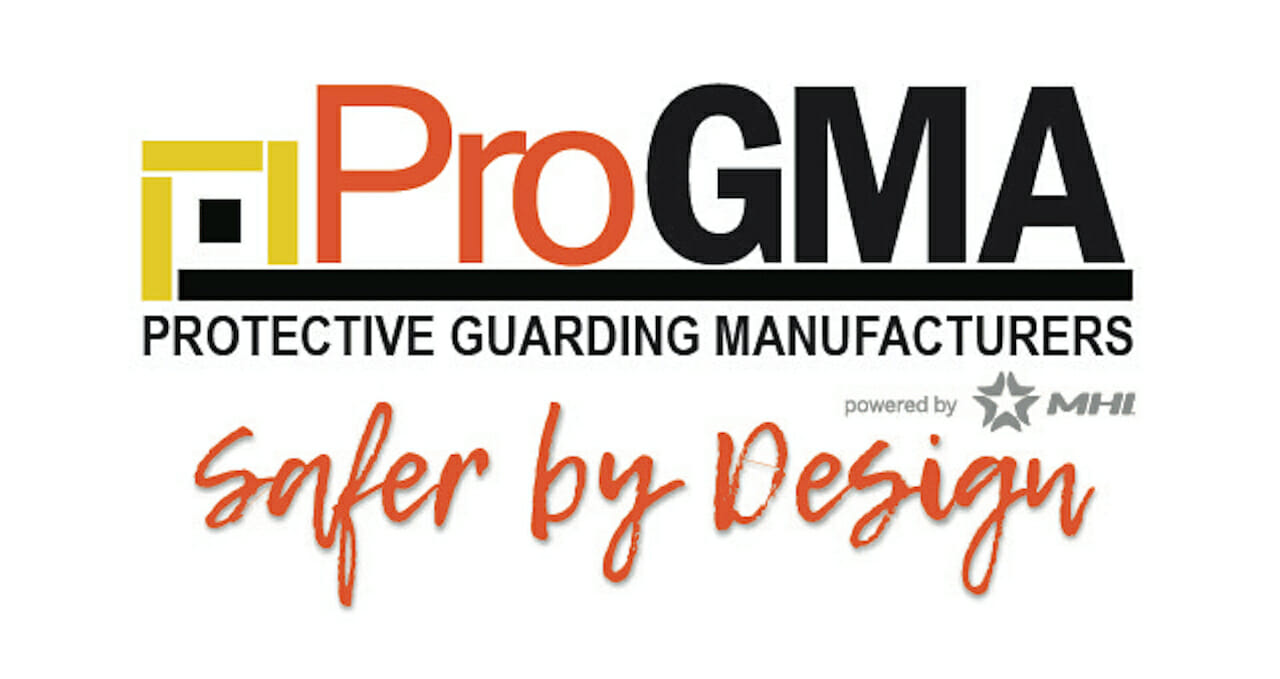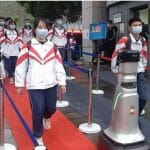The Protective Guarding Manufacturers Association (ProGMA) reminds professionals in industrial facilities of the importance of selecting fit for purpose guardrails.
- ProGMA is a product group within the MHI trade association.
Nearly 100 workers are killed in the United States each year and a further 20,000 are seriously injured in powered industrial truck (PIT) incidents. Furthermore, impacts with pedestrians are the second most common accident involving PITs.
The National Institute for Occupational Safety and Health (NIOSH) is responsible for investigating forklift-related deaths, and it reports that many workers and employers may not be aware of the risks of operating or working near forklifts. NIOSH further reports that individuals are not following the procedures set forth in standards or equipment manufacturers’ guidelines.
This is a reality that impacts not only on those unfortunate enough to be involved in an accident, but also their colleagues, employers, families and friends.
Industry awareness is growing about the many protective guarding options available for warehouses, distribution centers and other industrial facilities. However, as is the case with any product sector, it takes a greater appreciation of the available solutions to ensure you are using the most appropriate tool for the situation at hand.
It’s always important to ask yourself whether the purpose of the guarding is to protect pedestrians and / or assets, or simply to separate areas of a facility. How might each scenario require a different level of protection based on a particular environment? Pedestrian barriers are for defining walkways but for areas where pedestrians and PITs share space, you should have a traffic-strength barrier. The strength of these products varies.
ProGMA has 20 member companies, many of which provide polymer and steel guarding equipment for pedestrian and vehicle protection. Options include single and double guardrails; pedestrian gates; steel and polymer designs; flexible and bounce-back bollards; and polymer and steel bollards.
Properly spaced guardrails are an excellent way of protecting pedestrians adjacent to mobile equipment aisles. They also prevent individuals from straying into areas where they are not permitted: for example, where PIT traffic is operating. Without guarding in place, distracted pedestrians and drivers might not always be aware of the dangers present.
ProGMA frequently engages with industry about what decision makers need to know to make an informed judgment about the installation and use of guarding. There is nothing random about choosing the right solution. We must understand the weight and speed of PIT and potential angles of impact. Other important considerations include the consequences of having no such protection for pedestrians; the environment and the layout of the facility. It’s also crucial to understand that where one guarding solution might be adequate, another will be less so, or even redundant. These are all significant details that often get overlooked.
Some manufacturers don’t distinguish at all between pedestrian and traffic guardrails; they talk of barriers and guardrails in general terms. In contrast, other product manufacturers have different ratings for different ranges of product. The most important message for industry to digest is that it matters greatly which barrier you choose.
For proof, we should consider the science (without getting too technical).
A vehicle traveling with a certain mass and velocity has a calculable amount of kinetic energy (measured in joules). Some manufacturers only state that their product is capable of withstanding an impact of 10,000 lbs. (4,536kg) at 5mph: this allows someone to calculate the energy in principle, but what if the vehicle is traveling with less mass and going faster? It is important to calculate the energy and speed of every PIT in circulation in a facility, because not all trucks weigh 10,000 lbs. or travel at a constant 5mph. By looking at these variables purely in terms of energy, we get a truly empirical calculation.
- For example: 10,000 lbs. @ 5mph = 11,331 joules but 6,945 lbs. at 6mph also equals 11,331 joules.
Energy is inescapably dependent on both factors: the more speed, the less weight for the same energy, and vice versa. Speed actually has the biggest influence on this calculation. If someone uses a pedestrian guardrail with a lower rating, it will not perform in the event of an impact from a heavier / faster PIT. The result is a complete failure of the guardrail – and potentially life-threatening consequences for any pedestrian on the walkway at the time.
One point to keep in mind as you search for guarding solutions is that an Occupational Safety and Health Administration (OSHA) requirement states that guarding must have a height of at 42 inches to be considered a true barrier. This is often confused with OSHA’s requirement for fall protection above a height of 48”.
In conclusion, responsible individuals must always analyze the scenario and the role of protective guarding both in incident prevention and in the event of an accident occurring. This includes ensuring that the product selected has been independently tested and rated to its stated performance data.
About ProGMA
The Protective Guarding Manufacturers Association (ProGMA) members are the industry’s leading suppliers of fixed protective guarding products designed to protect personnel, equipment, and inventory in industrial facilities. Member companies meet regularly to review, discuss, and revise the standards for design and performance of protective guarding products used in the material handling industry. ProGMA member companies are committed to the development, maintenance, and publishing of industry standard specifications for these systems. Visit the website at mhi.org/progma.
About MHI
MHI is an international trade association that has represented the material handling, logistics and supply chain industry since 1945. MHI members include material handling and logistics equipment and systems manufacturers, integrators, consultants, publishers and third-party logistics providers. MHI offers education, networking and solution sourcing for their members, their customers and the industry as a whole through programming and events. The association sponsors the ProMat and MODEX expos to showcase the products and services of its member companies and to educate manufacturing and supply chain professionals.
For more information, contact the ProGMA to see what solution will work best for you at industrygroups@mhi.org








